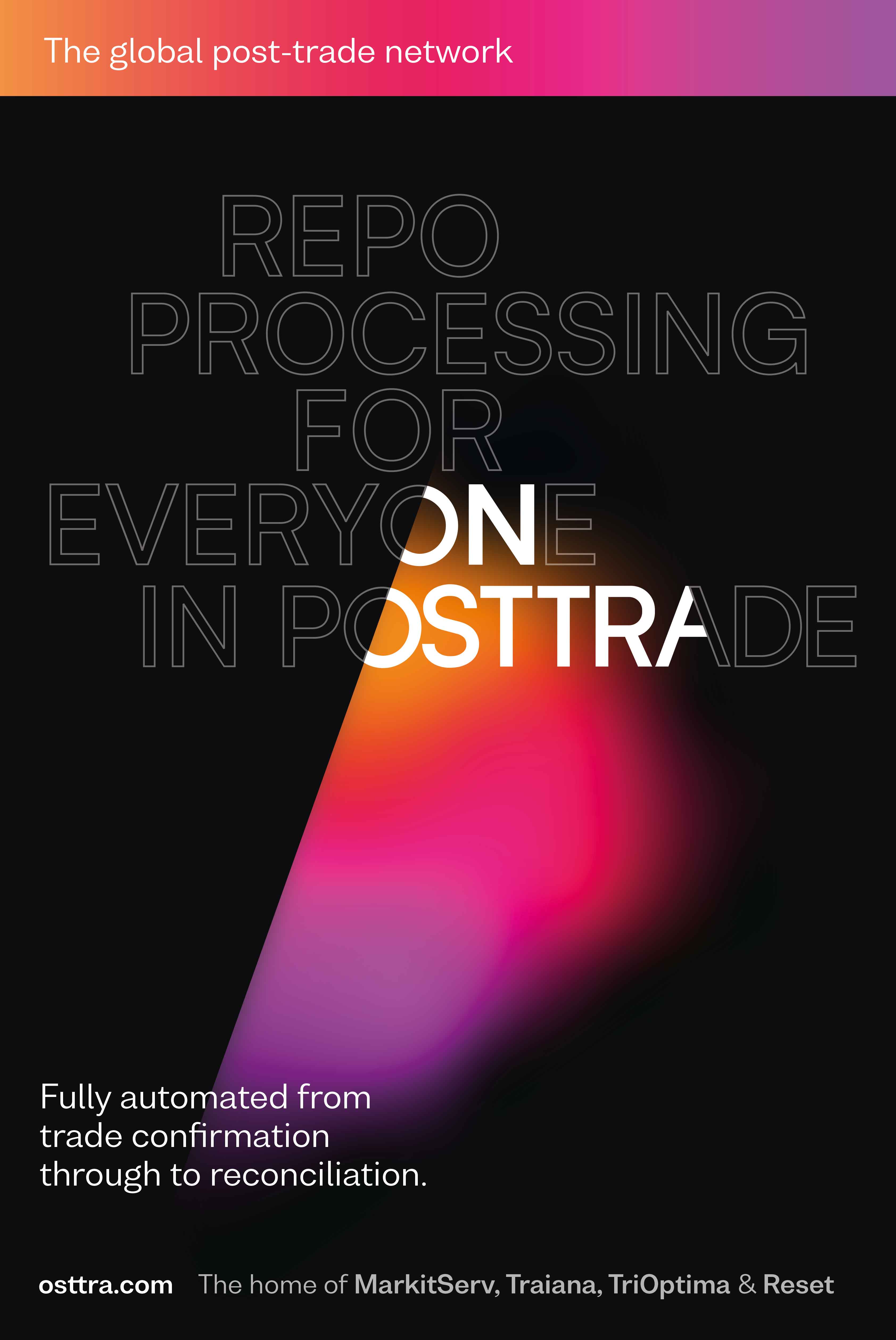As automation gathers momentum across repo markets, Glenn Havlicek, co-founder and CEO of GLMX, explains how firms are dealing with regulatory compliance, while tackling increasing costs
The business of securities financing has grown from a back-office utility to a consistent and often top profit centre for many investment firms. Although the profile of repo has grown dramatically from its humble beginnings and especially since the financial crisis, the importance of the activity to the smooth functioning of the broader capital markets cannot be understated. Repo’s utility spans central bank operations, fosters hedging activity, promotes price discovery and enables continuous liquidity in an array of markets. Individual institutions rely on their financing activities to ‘keep the lights on’ in both their equity and bond businesses. Repos and reverse-repos are at the very core of the financial markets’ plumbing. They underpin government bond trading, provide a critical source of short-term funding, enable a smooth management of liquidity and collateral and help settle trades and satisfy margin calls. In the near future, repo will provide the reliable replacement for London Interbank Offered Rate (LIBOR).
This favourable perception of the repo markets has not always been the case. Market volatility in 2008, during the early stages of the financial crisis, led to finger-pointing in the direction of the repo markets. In certain circles, repo became part of the problem as it was perceived to have accentuated market turmoil when trust evaporated and participants became concerned about counterparty reliability and repayment capacity.
With hindsight, that conception of the repo markets seems flawed. In fact, at a recent European Repo and Collateral Council (ERCC) meeting, one panelist claimed that, “in retrospect, the repo market was more savior than demon”. The problem was not the repo market itself but, in a non-trivial way, the antiquated communication and reporting mechanisms surrounding the repo markets. Much of the global regulatory effort since the Financial Crisis has focused on promoting improved information flow in the securities financing markets.
One could argue that not much of that intended evolution has been apparent in the 10 years since 2008, however, that is about to change.
Build bridges, not walls
Historically, investment in repo-specific technology has focused on collateral management and trade clearing. Investment in trade execution and reporting technologies has lagged notably. In fact, the repo market remains as perhaps the very last major financial market in which electronic execution is not the norm. The current process for locating cash and securities still relies heavily on phone calls, emails and instant messages. This time-consuming discovery process is often followed by the generation of manual trade tickets and, in some cases, the ‘double-keying’ of trades into trade management systems. ‘Workarounds’ and ‘band-aids’, as they are often described, have been developed over the years to reduce some of this arduous and error-prone manual workflow. In most cases, spreadsheet macros and bulk uploading are the extent of the modernisation of these essential workflows.
These patches are simple solutions that still rely on manual intervention, more often than not by a broker-dealer, and they sometimes lead to trade input errors. Incorrect trade details can lead to fails, exposure to market fluctuation due to poor position management, and wasted time cancelling and correcting trades. Processing mistakes are expensive.
To those outside the financing business, this is an outdated process. Counterparties in other sectors of the fixed income business have been streamlining execution protocols for decades. Electronic trading platforms with post-trade straight-through-processing capability are commonplace in global sovereign debt and derivatives trading, while some 20 percent of corporate bond trades occur electronically.
Recently, reporting pressures stemming from the second Markets in Financial Instruments Directive (MiFID II) and the Securities Financing Transactions Regulation (SFTR) in Europe have raised both the stakes and the urgency for change. Pre- and post-trade reporting requirements render existing manual processes virtually unusable. In fact, the pending implementation of SFTR may signal the tipping point in the transition to electronic trading in the securities financing markets.
Automation is gathering momentum across global repo markets as both buy- and sell-side firms come to grips with the new realities of compliance with more invasive regulatory regimes, while also tackling increasing costs and ever-rising customer expectations.
Additionally, changing dynamics within global repo markets, including broadened counterparty engagement and cleared financing alternatives, adds pressure for single-stop technologies, which provides access to multiple execution mechanisms.
Finally, in today’s data-driven world, ready access to business intelligence otherwise hidden within a firm’s own data can enable better-informed decision-making and improved profitability.
While there is a growing understanding of the value of global financing to the smooth functioning of broader financial markets, there remain challenges to broad adoption of execution technology in this vast ecosystem.
These observations were the genesis of GLMX, where our mission has been to bring a streamlined and data-rich solution to the otherwise tech-deprived repo markets. While GLMX has already made significant inroads to that end, we are but a part of the overall transition taking place in repo markets, which will ultimately lead to a level of efficiency on par, or even beyond, that can be found in other financial markets.
A journey of a thousand miles
During the initial development of our own repo execution technology at GLMX, it was imperative that we dedicated some time to hear what market participants were looking for as this age of automation unfolded.
Few would deny that operating in the repo markets has become much more challenging in recent years. And, while the overall size and daily trading volumes in global securities financing markets may inspire envy, efforts to apply technology tailored to the rapid and complex flow of these markets have been stubbornly resisted.
This resistance is not without understandable rationale. Both the buy and sell sides have long, and rightly so, valued their personal relationships with each other. The symbiosis, which has ensued has benefitted all markets participants. Candidly, much of the trepidation in transitioning into the age of repo financial technology derives from the desire to maintain these close and unquestionably valuable relationships.
However, much like the flawed perception of repo markets during the financial crisis, repo execution technology, in practice, holds the promise of providing greater opportunity for relationship building by freeing up valuable time otherwise spent on unnecessarily manual processes.
In other words, as global interest rates have begun to rise and brought with them increased volatility, it is a lot easier to have a conversation about your counterparty’s needs in a fast-moving market if you’re not keying trade details into a spreadsheet.
Finally, if the repo market is to fulfill its potential as both the vital provider of short-term funding and liquidity, plus the trusted replacement for LIBOR, including the Secured Overnight Funding Rate, few will argue that change is not urgently required.
At GLMX, we’re hoping to play a key role in that exciting, evolutionary change.


